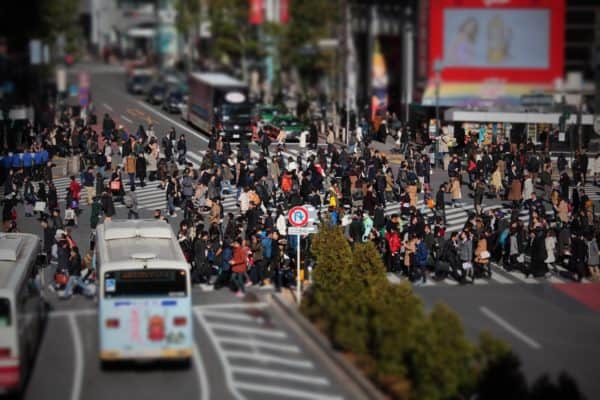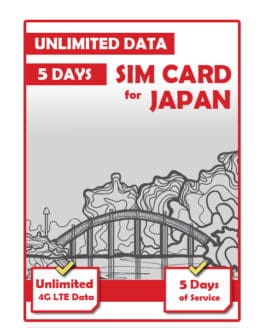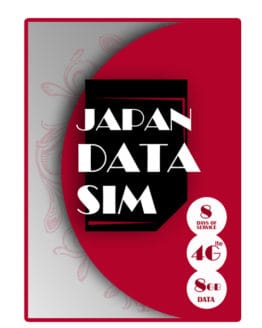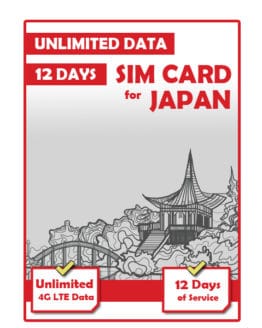Best Times to Visit
Spring and autumn are hands-down the best times of year to visit Japan. March is still quite chilly but is not a heavy travel time, and cherry blossoms start blooming at the end throughout most of April, depending on the area. They bloom earliest in the southern regions and last in Hokkaido, the northernmost island.
The first week of May is “Golden Week” which is one of the busiest travel weeks for all of Japan. Other weeks to avoid are Obon in mid-August (from around the 11th to the 17th but the dates vary), which is to pay respect to the souls of ancestors and is travel heavy as many Japanese people return to their family homes. “Silver Week”, usually the third week of September, also has many public holidays and is a busy time.
The weather is warm but not too humid in April and May. June and July are rainy and increasingly hot, and August is brutally hot and humid. It starts to cool down towards the end of September. October has perfect weather, still quite warm and not humid. November will be chilly but the end of November is the best time to see fall foliage in all over Japan, especially in Kyoto and Nikko. December, January, and February are extremely cold but naturally is the best for any skiing and snowboarding aficionados. Check out the Snow Festival with massive snow and ice sculptures in Sapporo if you head to Japan in early February.
General Travel Tips
Carry a pack of tissues (they are often handed out as promotional material anyway) as some public toilets do not provide toilet paper. Convenience stores (like Lawson, Family Mart, 7/11, Poplar, Circle K, and Sunkus) are everywhere in Japan and your one-stop shop for just about anything you could need. Delicious pre-made meals and snacks, drinks, coffee, spare clothing, toiletries, hair ties, stationery, etc., the konbini, as these stores are called in Japanese, has what you need. Drinking in public areas is legal in Japan, so feel free to have a boozy picnic under some cherry blossoms- in fact, that’s a national pastime!
JR Rail Pass
The JR Rail Pass is by far the best deal for your money when it comes to domestic travel in Japan. Available in 7-day, 14-day, and 21-day passes, it allows you to hop on all JR trains, even the high-speed Shinkansen bullet trains. You can cover the entire country if you plan your days carefully, and the JR Pass will absolutely save you money. For bullet trains, you must go to the “Green Window” at train stations to show them your pass and get an additional ticket to enter the turnstiles. Be careful not to lose your receipt ticket, as you must layer both that and the seat ticket and insert them into the ticket slot at the same time. For regular trains, you just show your pass to the guard at the turnstiles and they’ll manually open the gate for you.
There are also regional passes available for cheaper prices if you’ll only be going to certain areas of Japan.
It is best to purchase the JR Pass in advance from an authorized distributor. They used to be impossible to buy inside the country, but currently major train stations and airports are selling them until March 8, 2018. Keep in mind that only JR Lines are included in the pass, not subway lines that are owned by other companies.
If you decide against purchasing a rail pass, there are still some tap cards such as Suica and Pasmo that you can load up with money for train fares to get through the turnstiles more quickly. You can buy these at special ticket machines in nearly every train station. There’s a button to switch to English and from there it’s easy to navigate and purchase a new card. If you make a mistake, the button to cancel is not on the menu but on the actual machine. It costs at least ¥500 for the card deposit, and anything extra will be loaded onto the card.
Getting Around
Most signs are bilingual with Japanese and English and are becoming more thoroughly translated with the upcoming Olympics, but generally, it will be difficult to communicate in English with people who don’t have jobs dealing directly with tourism. Larger hotels should have a concierge or receptionist with English skills if you’re really lost. Getting a SIM card and some mobile data or a pocket wifi hotspot will help a lot with getting around. Free wifi is still quite rare across Japan, so if you’re in desperate need, duck into a Starbucks or McDonalds as those reliably offer wifi to their customers. Save maps of the train and subway systems to your phone before venturing out. Bullet trains also have a wifi network, but you must pre-register to use it. Navitime is the best route planning app.
Hot Springs
A visit to some Hot Springs (onsen) are a must for any visitor to Japan! These open air baths are a way to get clean, relax with friends and enjoy the ambiance of this old tradition. You either pay when you enter or buy a ticket from a vending machine. If it’s all in Japanese, the employees will come and push the correct button for you.
Small towels are available for rent when you buy your entrance ticket. Shampoo, conditioner, and body wash are usually provided and some hot springs will provide q-tips or lotion, but you will need to take along anything like makeup remover, face wash, etc. As you go into the separate bathing areas, there are shelves for your shoes if you didn’t take them off at the entrance, and then lockers for your personal belongs and clothes. The key is on a band to wear around your wrist. Shower by sitting at the individual stalls and then rinse off everything before going into the communal baths. Women with long hair should pull it up to avoid it dangling into the water.
If you have tattoos, you may be barred from going into the bathing area. If your tattoo is small enough, you can usually get away with covering it with a bandage or a cloth medical wrap. Attitudes toward tattoos are slowly changing in Japan but not all hot springs are accepting of them.
Train Station Tips
Eating and drinking on the train is frowned upon in Japan, though you won’t get ticketed. It’s fine to scarf down your food quickly on the platform as you wait for your train. Make sure you stand to the side for people exiting to get past before entering the train. At rush hour, especially in Tokyo, you may be packed in tightly next to people.
For women: it’s rare, but there have been cases of men groping women in crowded trains. The word to shout “Chikan! (chee-kahn)” if this happens to you. Other passengers should come to your aid and flag down a police officer at an upcoming station. There are also women-only cars during rush hours- it’s usually the first or last train carriage and are clearly marked on the platforms.
The One Must-Pack Item
Deodorant. Japanese deodorants don’t have antiperspirant ingredients, and a baby-powder scented spray is simply not enough at any time of the year, especially in summer. Just about anything else you could need is available in the bigger cities.







